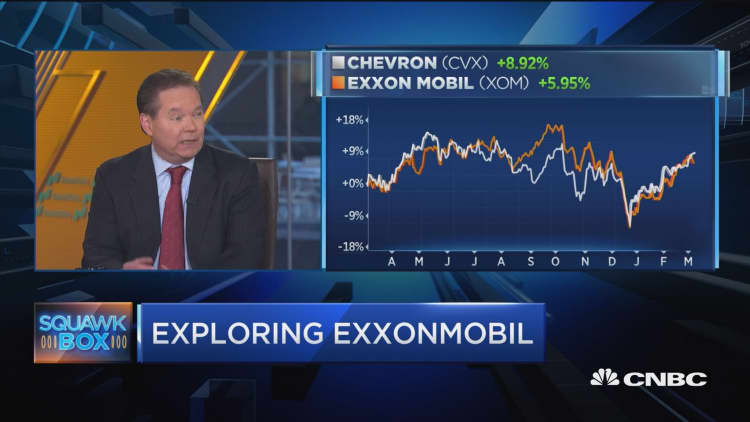Oil prices rose in choppy trade on Thursday, as the market continues to draw support from ongoing OPEC-led supply cuts and U.S. sanctions against exporters Venezuela and Iran.
However, gains were capped by record U.S. crude output and rising inventories and falling estimates of global economic growth. Crude futures briefly tumbled towards session lows in mid-morning trade, tracking a slump in equity markets after the European Central Bank cut its economic growth forecast for the continent.
U.S. West Texas Intermediate crude futures ended Thursday's session 44 cents higher at $56.66 per barrel, near the session peak at $56.99.
Brent crude futures were up 32 cents at $66.31 per barrel around 2:30 p.m. ET. The international benchmark for oil prices earlier rose as high as $67.

Prices are being supported by efforts led by OPEC and other countries — a grouping known as 'OPEC+' — to withhold around 1.2 million barrels per day of oil, a strategy aimed at tightening markets.
"In our view, OPEC's strategy is to rebalance the market as quickly as possible and exit the cuts by the end of June in order to grow production alongside shale producers in the second half of this year," U.S. investment bank Goldman Sachs said in a note on Wednesday.
U.S. sanctions against the oil industries of OPEC members Iran and Venezuela have also had an impact, traders said.
Venezuela's state-run oil firm PDVSA this week declared a maritime emergency, citing trouble accessing tankers and personnel to export its oil amid the sanctions.
Washington granted its biggest buyers — mostly in Asia — waivers when the sanctions against Iran were re-introduced in November 2018, allowing them to buy limited amounts of crude for another 180 days.
Washington has put pressure on these governments to gradually cut their oil imports from Iran to zero, but importers remain in talks over potential extensions, with India asking to be allowed to buy same volumes.
Despite these factors, oil remains in plentiful supply thanks to surging U.S. production, which has resulted in weaker WTI than Brent prices.

U.S. crude oil stockpiles rose much more than expected last week, with inventories up by 7.1 million barrels to 452.93 million barrels, according to a weekly report by the U.S. Energy Information Administration on Wednesday.
"There was a surprisingly large stockbuild, which was bearish," French bank Societe Generale said in a note following the EIA report.
Meanwhile U.S. crude oil production remained at a record 12.1 million bpd, an increase of more than 2 million bpd since early 2018.
That, along with the easing of a transportation bottleneck for low-cost U.S. Permian Basin shale oil, could lead to higher production, Goldman Sachs said.
Europe's central bank slashed its growth estimate to 1.1 percent, down from its last forecast for 1.7 percent expansion.
That followed another forecast for weaker economic growth from the Organisation for Economic Co-Operation & Development on Wednesday. The OECD said the world economy would grow 3.3 percent in 2019, down 0.2 percentage points from its last set of forecasts in November.
— CNBC's Tom DiChristopher contributed to this report.

